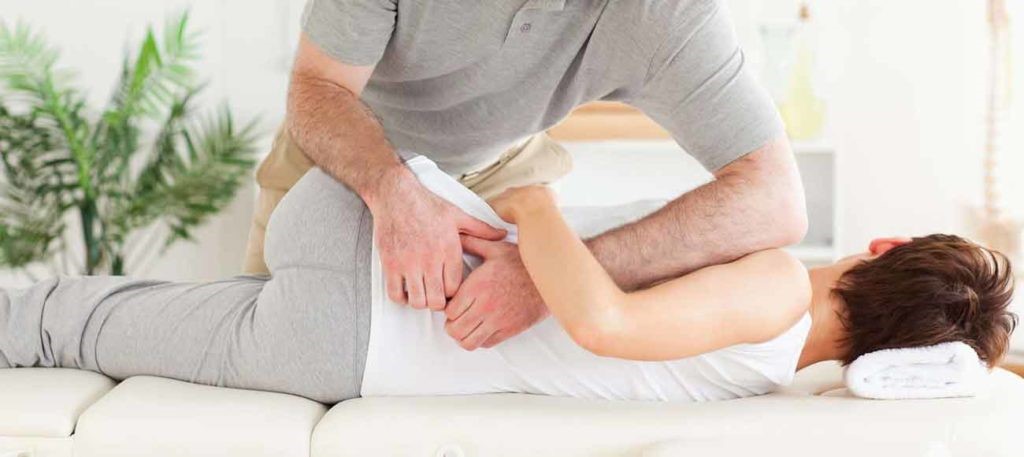Effective Ways to Treat Chronic Back Pain without Surgery
Chronic back pain can be frustrating. It’s scary, too, because we don’t know where it will hit next or when it will show up. There are also all the other issues related to pain, like mood swings and depression, in addition to the effects it can have on your sleep.
If you feel like a trip to the doctor is your only shot at some respite. You’re mistaken. You can likely prevent surgery by choosing an alternate treatment like lifestyle and diet changes, home remedies, physical therapy, and chiropractic care.
Common Causes of Chronic Back Pain
Chronic back pain is usually age-related, but can also result from a prior injury. The most common causes include:
- Arthritis of the spine —the gradual thinning of the cartilage inside the spine
- Spinal stenosis —narrowing of the spinal canal that may lead to nerve pain
- Disc problems, such as a herniated or bulging disc
- Myofascial pain syndrome—unexplained muscle pain and tenderness
Chronic back pain can sometimes be hard to diagnose. Your doctor may suggest finding ways to reduce flare-ups and find nonsurgical ways to manage pain when the source of the pain can’t be identified or isn’t directly treatable.
Non-Surgical Back Pain Treatment Options
1. Acupuncture
Acupuncture is a treatment technique in traditional Chinese medicine. Practitioners use needles to stimulate specific points in the body to treat various illnesses and conditions.
A study published in the Journal of the American Medical Association has found that acupuncture is as effective as conventional pain medications in reducing pain and improving functioning in people suffering from chronic low back pain.
2. Physical Therapy
When back pain gets bad enough to interfere with daily tasks, it’s time to strengthen and stretch. Physical therapy benefits people with chronic low back pain who have not found pain relief from other treatments.
Researchers found that low back pain patients who received physical therapy were less likely to need subsequent medical treatment. Physical therapists can help by directing you toward the best exercises for your condition.
3. Spinal manipulation
Spinal manipulation is a popular treatment for low back pain. One report suggests that 12 percent of adults in the U.S. receive spinal manipulation for back pain.
Spinal manipulation is a manual therapy that involves applying a controlled force by a practitioner to one or more of the intervertebral joints of the spine, or the related soft tissues, with the intent of improving the patient’s health.
The latest research suggests spinal manipulation is a safe and effective treatment for chronic back pain. The study found that patients with acute and chronic back pain who received this manipulation technique improved significantly more than those who received usual medical care.
4. Exercise & Sports
Exercise should be an integral part of any low back pain treatment program. The right exercise program can reduce stress and strengthen the muscles around the back.
According to research, the best exercises for lower back pain control include stretching, joint mobility exercises, balance training, body weight exercises, and strengthening exercises using resistance bands.
5. Pharmacologic therapies
Pharmacologic therapies have remained the mainstay of treatment for low back pain. Several medications help ease chronic low back pain, such as analgesics, topical medicines, anti-inflammatory drugs, muscle relaxants, and antidepressants.
Pain medications such as opioids, Vicodin, OxyContin, and Percocet, are highly addictive and are not intended for prolonged use. Although some patients do not respond well to pharmacologic therapies, most patients can find relief with routine physical therapy.
6. Epidural Steroid Injections
Suppose you suffer lower back pain due to lumbar spinal stenosis or ruptured discs. In that case, you may be a candidate for epidural steroid injections (ESI). Epidural steroid injections target the inflammation that comes from ruptured discs.
The injections reduce inflammation and make patients more comfortable, but the benefits don’t last. Though these injections can be painful, they are generally safe when performed by a board-certified anesthesiologist.
7. Lifestyle Modification
The strain we put on our back sometimes is mirrored in our everyday habits. You can use extra pillows and cushions to lift yourself closer to the desk and avoid hamstring tightness from hunching over.
Manage your environment, take regular walks, avoid long periods of sitting and avoid awkward sleeping positions at night.
8. Diet Modification
For years, nutrition and diet have gone unnoticed in managing back pain treatment. However, many experts now realize that the foods a person eats can profoundly impact their chronic pain.
A healthy diet rich in anti-inflammatory foods allows the body to heal itself naturally. Change your diet, and you may change your back pain.
Some pain is expected as we go through regular activities, so this is not a cause for alarm. However, if your back pain lasts more than a couple of days, don’t hesitate to contact your doctor for proper diagnosis and medical care.
Western Sydney Chiropractic Clinic Serves Suburbs – Chiropractor Near Me
Seven Hills NSW 2147
Kings Langley NSW 2147
Kings Park NSW 2148
Blacktown NSW 2148
Baulkham Hills NSW 2153
Norwest NSW 2153
Castle Hill NSW 2154
Rouse Hill NSW 2155
Kellyville NSW 2155
Kellyville Ridge NSW 2155
Schofields NSW 2762
Quakers Hill NSW 2763
Marsden Park NSW 2765
Box Hill NSW 2765
Rooty Hill NSW 2766
Stanhope Gardens NSW 2768
The Ponds NSW 2769

